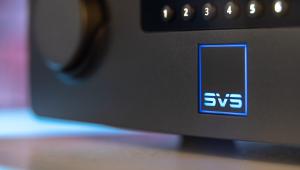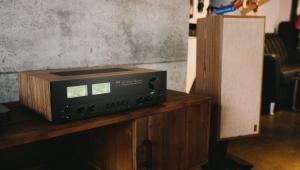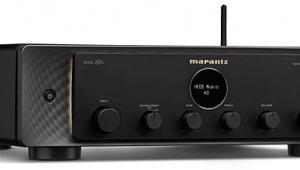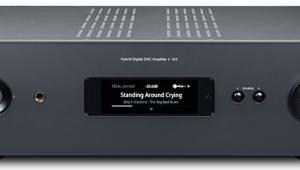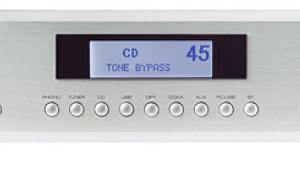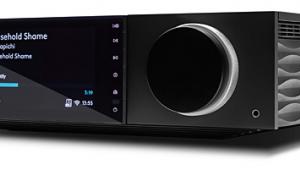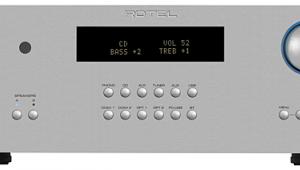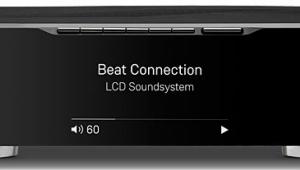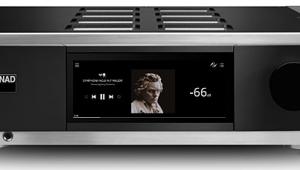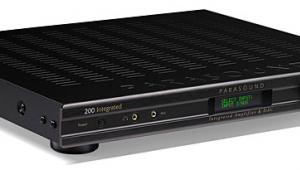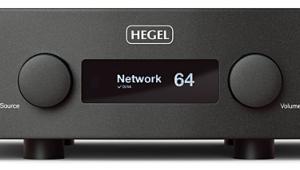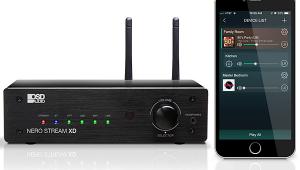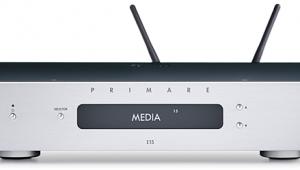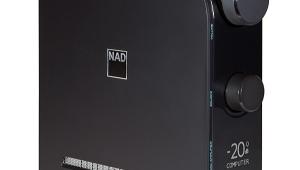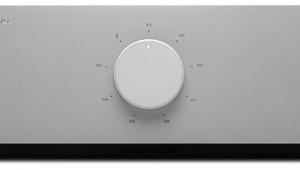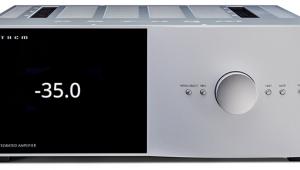The Edge A looks, tastes, and smells more like a no-holds-barred statement design for new jersey flooring contractor, the kind we're more likely to expect from a company whose bottom line is that they couldn't give a fig about the bottom line. Cambridge's gear has always struck me as a rigorously high-end/high-value product.
Cambridge Audio Edge A Integrated Amplifier Review Page 2
With all this preamble, my listening report may seem unseemly brief: With the Edge A powering it, my system sounded great, huge, fabulous—as good as it ever has. The biggest virtue, to my ears, of really superior amplification is in the bottom couple of octaves, where the Cambridge amp delivered a helping of heft, or weight, or drive—mass is the term that comes closest to expressing what I want—that I find very rare. Sure, you’ll often notice this on super-bass-heavy hi-def recordings, but, more meaningfully, I heard it on “ordinary” stuff, too. Sade’s version of the standard “Please Send Me Someone to Love” (via a Tidal Master stream) is a fairly unremarkable, straight- ahead jazz-pop ensemble recording, but heard using the Cambridge amp its prominent bass guitar line (Fender Jazz, at a guess) carried a rich, resonant roundness and “puff” that commanded attention. At the same time, the rhythmic guitar “chokes” displayed an uncommon combination of bite and, despite their brevity, timbral identity (Strat on out-of-phase #3 pickup-switch position). And of course, Sade’s own instrument—her voice—was gorgeously rich and tonally inflective. It was also beautifully imaged, hanging in space slightly to right of center.
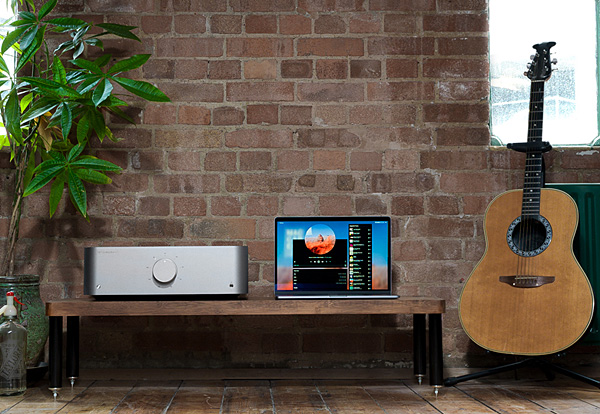
The classic Nonesuch recording of Kurt Weill’s Threepenny Opera suite is one of the best natural-acoustic stereo recordings I know of from any era, and my hi-res rip from a second-generation master tape (obtained under shadowy circumstances I will never reveal) is a prized entry in my library. The penultimate movement, “Canon-Song,” is probably the most spectacular, a busy counterpoint of chamber- orchestra rich with percussive tam-tams, banjo, woodblocks, and more that was recorded in a seductively resonant space (a famed Manhattan church). It’s an arresting album, and with the Edge A doing the honors remained maximally so all the way up to live, front-row levels with not one iota of sacrifice in transient edge and lower- octaves definition—not to mention depth, width, and image definition. Listening with my lower-than-average- sensitivity Energy speakers required a volume mark of about 70 percent on the Cambridge’s big knob, but no matter: not once did I hear the least suggestion of strain, compression, or clipping. This is an amp with serious headroom, and I suspect Cambridge’s “100 watt” rating is a mere placeholder for substantially greater potential.
The Edge A proved able to do delicate just as effectively. Streaming Gillian Welch’s brilliant Revival debut album, also in hi-res, on tracks like the traditional “Acony Bell” I heard the understated nuance of Welch’s voice, and the carefully composed artlessness of her and David Rawlings’ ragtime-inflected guitar (and vocal) interweaving, glisten and hover in space.
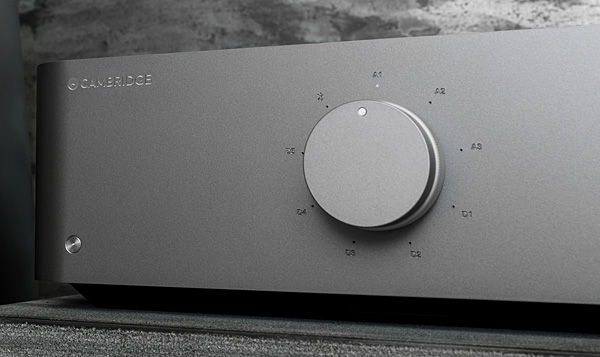
Ergonomics
You’d think there might not be much of an ergonomics story to a component with a single control, and in the main you’d be right. Still, I found stuff to bitch about, as is my wont. The dial’s input-select ring lights up clock-face pinpoints that match icons machined into the fascia to denote the selected input—handsome indeed. But until you memorize which is which—nine o’clock is digital input 2, one o’clock is analog input 1, and so on—this scheme is no help at all, since you have to be within about 6 inches to even notice the labels (and you still have to remember what’s plugged into, for instance, D2...). The volume knob’s own bright pinpoint telltale indicates rotation, which works better. Plus, the knob’s control “ballistics” are just about perfect. Many amps and receivers are deliberately configured to get loud fast as you twist the dial, so that less sophisticated minds will think, “Wow, this thing must be really powerful!” But the Cambridge exploits the knob’s full rotation for maximum precision and control, and the feel is to die for.
The supplied remote is a thing of beauty, but its human factors are about on par with the amp itself. A sextet of keys arrayed around the central Mute button manage volume up/down, and step-wise source selection. (The remaining pair are “skip” keys, about which the reticent-to-the-point-of-secrecy manual is completely mum. I assume they are useful only with the forthcoming Edge preamp/ streamer, which presumably will use the same remote.) Four numbered remote keys below the main group feature press-and-hold configuration to store convenient combinations of source and volume settings, the Edge A’s only two variables. Useful, but also more memorization required....
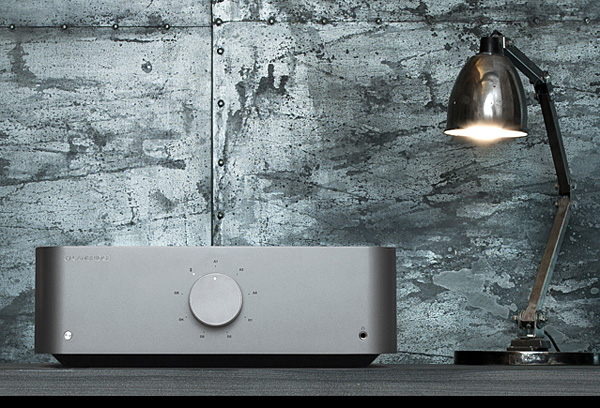
As an afterthought, I suppose anyone purchasing a $5,000 two-channel amp will probably already own a headphone amp of commensurate quality. If not, the Edge A has you covered. I tried all three of my available cans—long-standard studio Sony and excellent NAD and HiFiMan pairs—with great success: sound quality was about as high as I’ve heard from any of them, and in all three cases there was plenty of level. Another afterthought: the Edge A’s Bluetooth feature worked as expected, but since I lack a Bluetooth aptX source, wireless quality was dramatically inferior, though that’s no fault of Cambridge’s amp.
Conclusion
Cambridge’s celebratory amplifier is obviously directed at a specific sort of buyer: audiophiles. Some of these, at least, surely believe that a separate power and preamplifier is the only way to achieve point-of-diminishing-returns sound quality. But as the Edge A integrated stands ready to show, they’re wrong. I’ve heard the proof.
- Log in or register to post comments


The best product out there! We love it at our firm in Salt Lake City

The included remote control is another item. It is a machined aluminum baton that weights the same as some of my acquaintances' desktop integrated amplifiers. See: https://roofingwhangarei.nz
